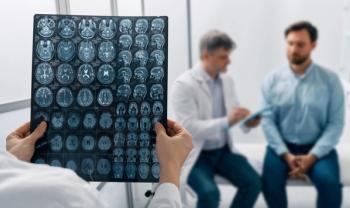
Latest Systematic Review of Estrogen’s Role in Migraine
Investigators offer a review of the most recent literature depicting the relationship between estrogen and the incidence of migraine headache.
A recent literature review published in Systematic Reviews provided an updated analysis of the relationship between estrogen and migraines.
The last systematic review of estrogen and migraine prevalence was conducted in 2006. As such, investigators expanded to incorporate the most recent studies and “on experiments that utilized hormone replacement therapies (HRT) as a means for studying estrogen withdrawal,” the study authors wrote.
Migraine is theorized to be facilitated by hormones due to the significantly higher incidence of migraine in women (18% vs 6% in men), often occurring during the menstrual cycle. Indeed, “up to 70% of female migraineurs notice menstrual association of their headaches,” study authors wrote. Moreover, women are likelier to suffer longer lasting and more intense migraines compared with men.
Prior research has associated estrogen with migraine headaches, including 1 study which reported that the prevalence of migraine in male-to-female transgender individuals who were receiving estrogen therapy was comparable to the prevalence of migraines in females and far exceeded migraine rate in males.
Investigators conducted a comprehensive literature review of 19 studies from an initial total of 246 that examined the role of estrogen in migraine pathogenesis. The investigators aimed to use the data to analyze the specific roles of estrogen in migraine headaches and provide health care professionals and patients with the most updated information on pathology and treatment options.
The review included studies from PupMed and EMBASE using keywords and the respective MESH and PICO search engines; the studies included 3 randomized controlled trials (RCT), 3 cross-sectional studies, 3 prospective cohort studies, 2 open-label clinical trials, 4 crossover studies (2 of which were double-blind placebo-controlled), and 4 survey/diary-based studies for a total of 37,139 patients.
Of the patient population, 1646 were menstruating women, 35,394 were postmenopausal women, 50 were male-to-female transgender women, and 49 were pregnant women.
Twelve studies investigated the effect of estrogen withdrawal on the incidence of migraines and determined that the withdrawal of estrogen during menses is a critical factor in the onset of migraine headaches. “In particular, 2 studies found that priming with estrogen followed by a drop in serum estradiol levels below 45 to 50 pg/mL increased the risk of migraine precipitation,” the study authors wrote.
Three studies evaluated the effects of HRT on migraine in postmenopausal women; the results generally concluded that estrogen replacement increased the incidence of migraine, according to the investigators.
Other studies examined the effects of pregnancy and fluctuating estrogen levels on migraine activity. In effect, the systematic review “expanded the discussion in the population of post-menopausal women,” according to the authors.
“We believe this provides greater evidence to the link between estrogen and migraines,” they wrote.
Furthermore, investigators argued that more research is needed to differentiate the effects of estrogen on various study populations, as well as to determine other hormones, neurotransmitters, and factors that have a part in migraine onset.
Reference
- Reddy N, Desai MN, Schoenbrunner A, et al. The complex relationship between estrogen and migraines: a scoping review. Systematic Review; March 10, 2021. doi:
10.1186/s13643-021-01618-4 .
Newsletter
Pharmacy practice is always changing. Stay ahead of the curve with the Drug Topics newsletter and get the latest drug information, industry trends, and patient care tips.













































































































































































































